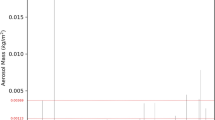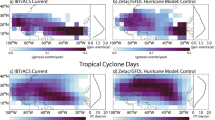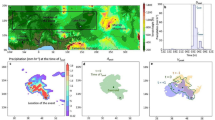Abstract
The impact of CO2-induced global warming on the intensities of strong hurricanes is investigated using the GFDL regional high-resolution hurricane prediction system. The large-scale initial conditions and boundary conditions for the regional model experiments, including SSTs, are derived from control and transient CO2 increase experiments with the GFDL R30-resolution global coupled climate model. In a case study approach, 51 northwest Pacific storm cases derived from the global model under present-day climate conditions are simulated with the regional model, along with 51 storm cases for high CO2 conditions. For each case, the regional model is integrated forward for five days without ocean coupling. The high CO2 storms, with SSTs warmer by about 2.2 °C on average and higher environmental convective available potential energy (CAPE), are more intense than the control storms by about 3–7 m/s (5%–11%) for surface wind speed and 7 to 24 hPa for central surface pressure. The simulated intensity increases are statistically significant according to most of the statistical tests conducted and are robust to changes in storm initialization methods. Near-storm precipitation is 28% greater in the high CO2 sample. In terms of storm tracks, the high CO2 sample is quite similar to the control. The mean radius of hurricane force winds is 2 to 3% greater for the composite high CO2 storm than for the control, and the high CO2 storms penetrate slightly higher into the upper troposphere. More idealized experiments were also performed in which an initial storm disturbance was embedded in highly simplified flow fields using time mean temperature and moisture conditions from the global climate model. These idealized experiments support the case study results and suggest that, in terms of thermodynamic influences, the results for the NW Pacific basin are qualitatively applicable to other tropical storm basins.
Similar content being viewed by others
Author information
Authors and Affiliations
Additional information
Received: 20 July 1998/Accepted: 24 December 1998
Rights and permissions
About this article
Cite this article
Knutson, T., Tuleya, R. Increased hurricane intensities with CO2-induced warming as simulated using the GFDL hurricane prediction system. Climate Dynamics 15, 503–519 (1999). https://doi.org/10.1007/s003820050296
Issue Date:
DOI: https://doi.org/10.1007/s003820050296




